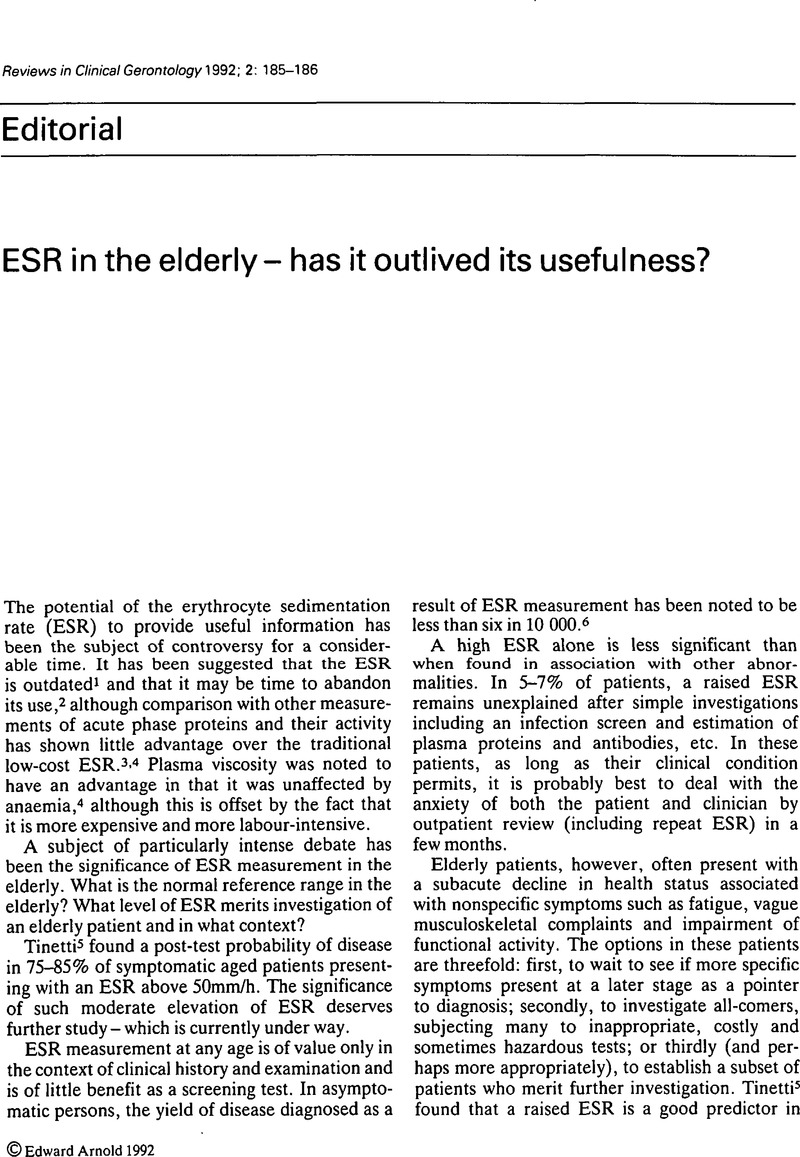No CrossRef data available.
Article contents
ESR in the elderly – has it outlived its usefulness?
Published online by Cambridge University Press: 17 November 2008
Abstract
An abstract is not available for this content so a preview has been provided. As you have access to this content, a full PDF is available via the ‘Save PDF’ action button.

- Type
- Editorial
- Information
- Copyright
- Copyright © Cambridge University Press 1992
References
2Bottiger, LR.Is it time to abandon the ESR [Editorial[? Acta Med Scand 1982; 212: 353–54.Google ScholarPubMed
3Katz, PR.A comparison between erythrocyte sedimentation rate and selected acute phase proteins in the elderly. Am J Clin Pathol 1990; 94: 637–40.CrossRefGoogle ScholarPubMed
4Kenny, MW.Efficiency of haematological screening tests for detecting disease. Clin Lab Haematol 1981; 3: 299–305.Google ScholarPubMed
5Tinetti, ME.Use of the erythrocyte sedimentation rate in chronically ill elderly patients with a decline in health status. Am J Med 1988; 80: 844–48.CrossRefGoogle Scholar
6Sox, HC.The erythrocyte sedimentation rate – guidelines for rational use. Ann Intern Med 1986; 104: 515–23.CrossRefGoogle ScholarPubMed
7Wyler, DJ.Diagnostic implications of markedly elevated erythrocyte sedimentation rate: a re-evaluation. South Med J 1977; 70: 1428–30.CrossRefGoogle Scholar
8Fincher, RE.Clinical significance of extreme elevation of the erythrocyte sedimentation rate. Arch Intern Med 1988: 146: 1581–83.CrossRefGoogle Scholar
9Ford, MJ.The significance of gross elevation of the erythrocyte sedimentation rate in a general medical unit. Eur J Clin Invest 1979; 9: 191–94.CrossRefGoogle Scholar


